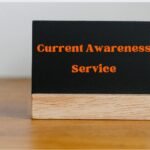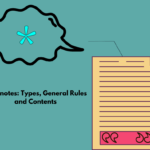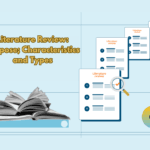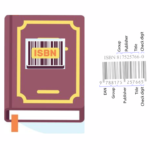A conference paper is a vital piece of research that is showcased at an academic or professional gathering. This format typically undergoes a rigorous peer review process and is published as part of the official conference proceedings. By presenting their latest findings in this setting, researchers can engage with the academic community, share their insights, and garner invaluable feedback.
Key Characteristics of a Conference Paper:
- Presentation at a Conference – Authors take center stage, sharing their work with an audience that can include fellow researchers, industry professionals, and esteemed academics, fostering lively discussions and exchange of ideas.
- Peer Review (Sometimes) – Many conferences adhere to a strict selection process, ensuring that only high-quality papers make it into the spotlight, which elevates the overall standard of the presentation.
- Shorter than Journal Papers – Conference papers are generally more succinct, capturing the essence of the research in a compact format that highlights key findings without unnecessary elaboration.
- Published in Conference Proceedings – Following the event, selected papers are compiled into a formal proceedings volume, often made accessible online, allowing a broader audience to benefit from the latest scholarly advancements.
- Faster Publication Process – In contrast to journal papers, the timeline for conference papers is notably rapid, offering researchers an expedited avenue to disseminate their discoveries to the world.

Writing tips of conference paper
Writing a conference paper is an intricate art that demands clarity, precision, and a well-organized approach to effectively convey your groundbreaking research. Below is a vibrant step-by-step guide to navigate this process:
1. Grasp the Conference Requirements
- Dive into the Call for Papers (CFP): Each conference presents a unique set of guidelines regarding formatting, length, and submission protocols, so it’s vital to familiarize yourself with them.
- Know the Audience: Craft your writing with the expectations of fellow researchers in mind, steering clear of overly complex jargon that may alienate a broader readership.
- Select the Appropriate Format: Different conferences may invite full papers, prefer short papers, or request extended abstracts, so choose wisely to align with the event’s focus.
2. Framework of a Conference Paper
A conventional structure often adheres to the IMRaD format: Introduction, Methods, Results, and Discussion.
a. Title & Abstract
- Title: Create a title that is not only succinct but also vibrant and thoughtprovoking, providing an engaging glimpse into your work.
- Abstract (150–250 words): Offer a compelling snapshot of the research problem, methodology, pivotal findings, and overarching conclusions.
b. Introduction
- Illuminate the problem at hand and articulate its significance in a broader context.
- Provide a rich tapestry of background information, weaving in a literature review that situates your work within the existing body of knowledge.
- Clearly articulate your research question or hypothesis, setting the stage for what follows.
- Outline the paper’s structure, guiding readers on a journey through your research.
c. Methodology
- Detail the approach, experiments, datasets, or algorithms employed with clarity and depth.
- Justify your chosen methodology, explaining its relevance and effectiveness.
- Keep your descriptions concise yet comprehensive enough for others to replicate your work.
d. Results
- Present your key findings with clarity and emphasis, avoiding interpretation at this stage.
- Utilize tables, graphs, or charts to vividly illustrate your data, making it accessible and engaging.
- Deliver brief but precise explanations that reveal the significance of the data.
e. Discussion
- Delve into an analysis of the results, drawing comparisons with prior work and weaving in contextual insights.
- Address any limitations or unexpected findings with candor and depth.
- Illuminate potential applications or future research directions, igniting curiosity beyond your study.
f. Conclusion
- Recap the main findings, encapsulating the essence of your research with clarity.
- Reinforce the unique contribution your study makes to the field.
- Highlight next steps or practical implications that could extend the reach of your research.
g. References
- Adhere strictly to the required citation style (e.g., IEEE, ACM, APA), ensuring consistency and professionalism.
- Cite only those sources that are relevant and trustworthy, building a solid foundation for your arguments.
3. Writing Tips
- Be Concise: Recognize that conference papers typically have strict page limitations (commonly 4–10 pages), prompting judicious word choice.
- Embrace Clear Language: Favor straightforward language over convoluted sentences and elaborate jargon unless crucial.
- Substantiate Claims with Evidence: Support your arguments robustly with data, references, and logical reasoning that resonates with your readers.
- Follow Formatting Directives: Adhere to specified templates (e.g., IEEE, Springer, or ACM formats) to ensure professional presentation.
4. Editing & Proofreading
- Assess Clarity & Flow: Ensure the logical flow of ideas fosters a seamless reader experience.
- Remove Redundancy: Eliminate repetitive information to maintain the reader’s interest and engagement.
- Grammar & Spelling: Utilize tools like Grammarly or seek assistance from peers for thorough reviews of your work.
- Verify References: Scrutinize citations for proper formatting and accuracy, sustaining academic integrity.
5. Submit & Prepare for Presentation
- Meet Submission Deadlines: Conferences often impose stringent timelines, so timely submission is crucial.
- Prepare an Engaging Presentation: If your paper is accepted, be ready to translate your research into a captivating presentation that effectively engages your audience.
Presentation tips of conference paper
Delivering a compelling conference paper requires not just careful preparation but also a flair for clear communication and engaging your audience. Here’s a vibrant, step-by-step guide to empower you to deliver a memorable presentation:
1. Grasp the Conference Format
- Time Limit: Typically, conferences allocate a concise window of 10 to 20 minutes for presentations, followed by a brief yet vital Q&A session.
- Audience Type: Understand the demographic of your listeners—are they specialists in your field or a mix of enthusiasts from various backgrounds? Tailor your content to resonate with them.
- Presentation Mode: Be aware of the setting—some conferences call for dynamic in person exchanges, while others embrace the flexibility of virtual presentations or visual posters.
2. Craft a Structured Presentation
A robust presentation generally unfolds from this framework:
a. Introduction (1–2 minutes)
- Begin with a captivating hook—perhaps a thought provoking question, a striking statistic, or a vivid anecdote that draws your audience in.
- Clearly articulate the research problem and underscore its significance.
- Establish the objective of your study with precision.
- Provide a clear roadmap of your presentation to guide your audience through your journey.
b. Methodology (2–3 minutes)
- Convey how your research came to life.
- Integrate visual aids like diagrams and tables to demystify complex methods for your listeners.
- Keep the technical jargon concise and accessible.
c. Results & Discussion (5–7 minutes)
- Unveil your key findings with striking visuals, using vibrant charts, graphs, or tables that highlight the essence of your results.
- Delve into the implications of these findings, weaving them back to your original research question.
- Compare your discoveries with existing studies to enrich the narrative and provide context.
d. Conclusion (1–2 minutes)
- Wrap up by summarizing your fundamental insights powerfully.
- Illuminate the significance of your research, embracing its broader impact.
- Suggest intriguing directions for future exploration.
- Conclude with a strong, memorable statement that leaves an echo in the minds of your audience.
e. Q&A (2–5 minutes)
- Anticipate questions and prepare succinct, thoughtful answers.
- If confronted with a query you’re unsure about, embrace it gracefully and suggest areas for further investigation.
3. Design Engaging Slides
- Visual Focus – Craft your slides to be visually striking—opt for charts, diagrams, and captivating images over cluttered text.
- Minimal Text – Aim for 5 to 6 bullet points per slide (or around 30 words) to keep your slides clean and impactful.
- Large Fonts – Use bold, legible fonts (at least 24point) to ensure everyone can read your content from any corner of the room.
- Cohesive Design – Maintain a professional aesthetic with a harmonious palette of colors, fonts, and layouts.
4. Commit to Practice
- Rehearse several times until your delivery flows like a well-tuned melody.
- Time yourself to stay within boundaries, ensuring you respect the audience’s attention.
- Practice in front of colleagues or record yourself, identifying areas for refinement.
- Prepare a contingency plan—perhaps a printed backup of your slides in case of technical mishaps.
5. Deliver with Unshakeable Confidence
- Clear Articulation – Speak with assurance; avoid merely reading from slides or notes.
- Engaging Eye Contact – Connect with various audience sections, making them feel involved in your narrative.
- Controlled Pace – Maintain a steady rhythm; use pauses to emphasize pivotal points.
- Expressive Body Language – Use hand gestures and purposeful movements to complement your message without distraction.
- Patiently Handle Questions – Respond with poise, and if uncertainty arises, acknowledge it gracefully.
6. Navigate Technical Considerations
- Arrive early to familiarize yourself with the equipment—test your laptop, projector, and microphone.
- Keep a backup copy of your presentation both on a USB drive and in email form for peace of mind.
- Acquaint yourself with the layout of the conference room to set the stage for your success.
Final Tip: Engage Your Audience
- Begin with a rhetorical question to stimulate thought.
- Share a relevant example or captivating anecdote.
- Draw connections between your research and real-world applications to resonate on a personal level.
With this guide, you’ll be well-equipped to present your conference paper with clarity, impact, and confidence. Your audience will leave not just informed but inspired!



